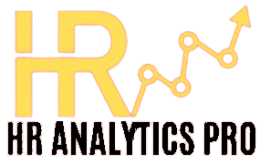HR Analytics: Impact on Employee Satisfaction and Productivity
January 14, 2024 2024-03-01 14:33HR Analytics: Impact on Employee Satisfaction and Productivity
HR Analytics: Impact on Employee Satisfaction and Productivity
HR Analytics: Decoding its Impact on Employee Satisfaction and Productivity
A Beginner’s Guide to Implementing HR Analytics in Your Organization
By [Kavya D.]
Introduction
In the rapidly evolving landscape of human resources, HR analytics has emerged as a game-changer. This beginner-friendly guide will walk you through the basics of adopting HR analytics, highlighting its impact on employee satisfaction and productivity, and providing practical tools and strategies to get you started.
Understanding HR Analytics
HR Analytics, at its core, is about using data analysis to improve HR decision-making. It involves collecting and analyzing various HR metrics to gain insights into employee performance, satisfaction, turnover rates, and more.
Step 1: Identifying Your HR Data Sources
Begin by identifying where your HR data comes from. Common sources include employee surveys, performance reviews, attendance records, and HR software systems. Ensuring you have access to accurate and comprehensive data is the first crucial step.
Step 2: Selecting the Right Tools
There are numerous HR analytics tools available, ranging from basic spreadsheet software to advanced analytics platforms. For beginners, starting with familiar tools like Microsoft Excel or Google Sheets can be a practical choice. As you grow more comfortable, you can explore more sophisticated tools like Tableau, SAP SuccessFactors, or IBM Kenexa.
Step 3: Defining Key Metrics
Decide on the key metrics you want to track. These could include employee turnover rate, time to hire, employee engagement levels, or training effectiveness. Your choice of metrics should align with your organization’s HR goals.
Step 4: Analyzing the Data
With your data and tools ready, begin your analysis. Look for trends, patterns, and correlations. For instance, is there a link between employee engagement and productivity? Does a particular training program correlate with higher performance scores?
Step 5: Making Data-Driven Decisions
Use the insights gained from your analysis to inform HR decisions. This could mean tweaking your recruitment strategy, modifying your training programs, or introducing new employee engagement initiatives.
Common Pitfalls to Avoid
- Overlooking Data Quality: Ensure your data is accurate and up-to-date.
- Ignoring Context: Data needs to be interpreted within the context of your specific organization.
- Overcomplicating Analysis: Start simple and gradually build up your analytics capabilities.
Impact on Employee Satisfaction and Productivity
HR analytics can profoundly impact employee satisfaction and productivity. By understanding what motivates and engages your employees, you can create a more supportive and productive work environment. Analytics can also help identify areas where employees may need additional support or training.
Conclusion
Implementing HR analytics can seem daunting at first, but by following these steps and being aware of common pitfalls, you can start to harness the power of data to improve your HR practices. The insights gained can lead to more informed decisions, ultimately boosting employee satisfaction and productivity.






